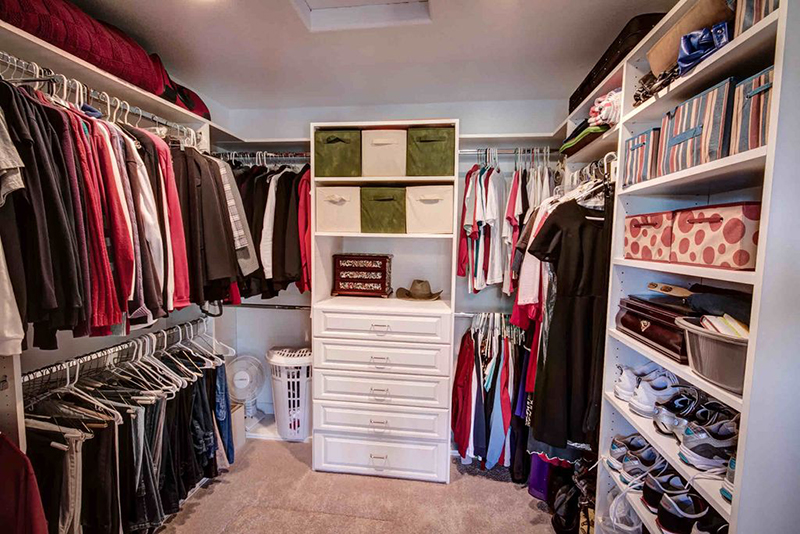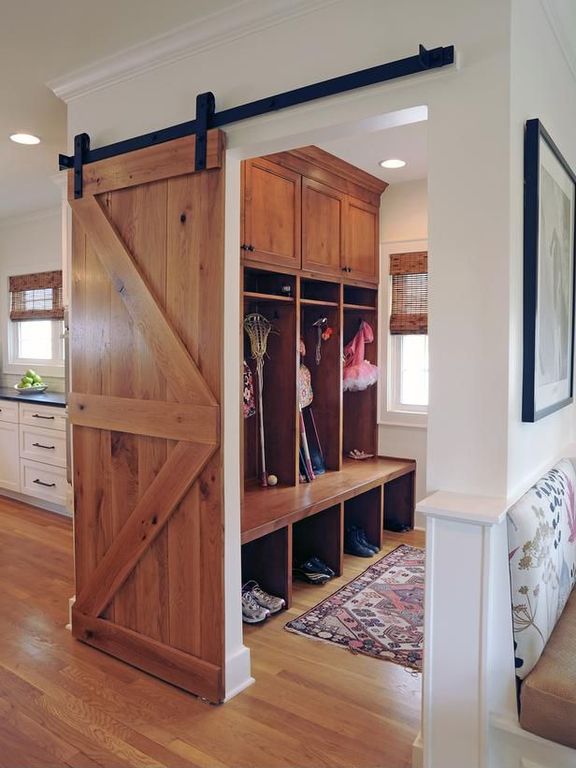We professional organizers have many secret tools and tips. They’re what make us very successful.
When our clients pay close attention and ask us questions, they obtain the magical key to unlock their clutter dilemma.
Many people who opt not to work with a professional set out with the best of intentions. They dive into a project after seeing an idea in a magazine or on Pinterest. They run to the store for organizing products they haven’t completely considered. Suddenly, they find themselves at home opening their latest purchase and realizing this new gimmick isn’t going to solve their organizing problem, either!
Does this sound familiar? Now you can avoid these clutter curve balls with five organizing secrets only the pros know.
Create the vision before you organize
How many times have you said to yourself “I’m going to organize my closet,” only to be left frustrated by the experience before you are halfway through?
The solution here is to create your vision first, then organize. Visioning is a bit like planning. It’s when you take the time to think things through before you begin doing the work.

Using the example of visioning for a closet, spend that time asking yourself some questions:
- How do I want to use this space in my closet?
- Will I store just this season’s clothes here, or just those that fit me currently? Or will I use half for clothing and half for memorabilia storage?
- How’s the lighting?
- Do I need a step stool to reach the shelves?
- Do I want to keep my hamper in the closet or move it to the bathroom?
Take the time to write down your vision first and then – here’s the secret bonus – get someone to help you.
Having someone assist you is a secret the pros know well. Human behavior studies have shown that when two people (rather than one) are working on a project it gets done faster – not just because of the extra pair of hands, but because of the synergy between the two people. There’s a flash of motivation that bounces off one person onto the other that gets us through these projects much more quickly.
Play hooky
No, not the skipping-work kind.
Professional organizers know that getting organized doesn’t necessarily mean having custom shelves built to clear the over-cluttered corners. We look for practical solutions with an aesthetic flair first. It’s not necessary to answer the organizing dilemma with an expensive or time-consuming project.
My secret tip? I happen to love using hooks as my first line of defense. Here are a few places hooks come in handy, and common items they can hold:
- Bathrooms: blow dryers and curling irons
- Kitchens: brooms, aprons, and towels
- Bedrooms: large hooks for backpacks and purses, small hooks for necklaces or belts
- Home office: cords, headsets, and chargers
Use really simple math
It’s called the “subtraction method.” You’ve heard of dividing your stuff into keep, sell, and giveaway bins, but when the clutter seems overwhelming, I favor an easier approach with just one master box, which is what I call the “somewhere else” bin.
With your intention set toward subtracting items from a particular room (rather than having to dust them and organize them again), start with one spot – say, the dining room table – and remove items that don’t belong there, placing them into your bin.
The pros use this secret strategy to help reduce both the clutter and overall overwhelm. It’s a great way to begin organizing a certain area, and you can return to the box later when you’re ready to deliver items back to their proper locations.
Create “drop zones”
Every member of your household should have his or her own drop zone. For example, you can set up a table right inside the garage as your son’s drop zone. When you pull into the garage, he’ll know to go directly to the table and drop off his football uniform and backpack before entering the house.
A drop zone is a secret tip we use to allow each family member to have a place where they manage the intense number of incoming items into the house without the stuff being strewn from backseat to bedroom.

In this case, the dirty football uniform is already in the garage near the washer and dryer, and, when he’s ready, your son can come out to the garage and triage his backpack: Pull out the empty food containers from lunch, water bottles from practice, homework to take to his room, and field trip signature forms to give to you.
Do this for yourself for your own briefcase and gym bag, too.
Shut down the distractions
One of the biggest reasons why my clients don’t trust themselves to get organized is because of the distractions they face. As a professional organizer, I can uphold the secrets to getting organized for my clients when they cannot do it for themselves.
If you can learn to master these distraction devils on your own, you are well on your way to making your organizing projects a super-simple and easy experience. Here are my secrets:
- Ignore interruptions. When in the midst of an organizing project, ignore the dings and rings that alert you to text or voicemail messages. One exciting text can derail an entire morning reserved for organizing the kitchen cabinets.
- Avoid diversions. Flipping through a book you meant to read; rereading a poem your daughter wrote for you; trying on a blouse to see if it still fits; researching a vacation destination on the Internet when you come across the brochure – it all sends you down another path. If your intention is to organize, you must stay on task.
- Dabble with discipline. The biggest complaint that we organizing pros hear from our clients is paper pileup. The reason we seem to have so much paper around is because it’s a reminder that we want to read, write, pay, respond, or sign up for something. Paper (especially lists of things we wanted to do) can really send us into a tail spin. Remember when tackling paper, we are just organizing it (that is, sorting it) not acting on it. These are two very different actions. Your job is to collect like items together to make paying bills easier, or sitting down to read more peaceful.
- Eliminate the little pieces. You know, the basket on the counter? The one with some pennies, one bracelet, two blank birthday cards, a charging cord, paper clips, lip balm, cough drops, a gift card, batteries, one pen cap, a small tissue pack, vitamins, a whistle, and Lego pieces? We’ve all got some version of this. When it comes to organizing – especially if you’re looking to make some major progress – remember this mantra: Little pieces = big time waster; big pieces = little time waster. To translate, when you deal with smaller items, it always feels like you do less. If you need to make some real organization headway, try starting with the larger items, such as furniture, suitcases, boxes, and appliances.
- Outsmart the temptation. We all have a natural inclination to match up the missing sock, reunite the pen cap with its pen, attach the backing to an earring that has none, or dig through the pantry to match the lid to its rightful water bottle. Trying to match up these long lost companions will sabotage your momentum when it comes to organizing. Avoid the temptation to fall into the matchmaking process, and instead toss items into a clear bag and label it with a black marker. Store all the bags together in a “missing parts and pieces” box and move on. They are likely to be reunited down the road.
Related:
